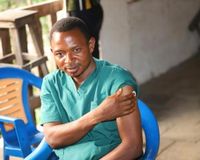In the heart of the Democratic Republic of the Congo (DRC), a race against time is unfolding as health authorities and international partners launch an urgent vaccination campaign to contain a new Ebola outbreak. The campaign, which began on September 13, 2025, in the Bulape health zone of Kasai Province, marks the country’s 16th battle with the deadly virus since its discovery in 1976. The stakes are high, the logistics daunting, and the memories of past tragedies still fresh.
According to the World Health Organization (WHO), the vaccination effort is initially focused on frontline health workers and individuals who have come into contact with confirmed Ebola cases. This targeted approach, known as the "ring vaccination strategy," aims to create a buffer of immunity around each known case, halting the virus’s relentless march through vulnerable communities. As the WHO explained in a statement, the campaign is “protecting our frontline workers & individuals at high risk of #Ebola infection.”
The first batch of 400 doses of the Ervebo vaccine landed in Bulape last week, a small but vital start drawn from a national stockpile of 2,000 doses stored in the capital, Kinshasa. The Ervebo vaccine, proven safe and effective against the Zaire ebolavirus species—the strain responsible for the current outbreak—has become a cornerstone of the global Ebola response. The International Coordinating Group on Vaccine Provision has approved the shipment of an additional 45,000 doses to the DRC, with deliveries expected in the coming days to bolster the campaign’s reach.
But the numbers behind the headlines are sobering. As of September 11, the Africa Centers for Disease Control and Prevention reported at least 68 suspected cases and 16 deaths, including four health workers, in the Bulape health zone. The WHO confirmed 25 cases by September 12. The epicenter of the outbreak is located near Tshikapa, the capital of Kasai Province, about 100 to 200 kilometers from the Angolan border—an area where frequent population movements threaten to accelerate the virus’s spread.
“Together with #DRC health authorities & partners, we are working round the clock to stop this outbreak,” said Prof. Mohamed Yakub Janabi, the WHO’s regional director for Africa, in a statement on social media. His words echo the urgency felt on the ground, where every hour counts and every vaccine dose could mean a life saved.
Containing the outbreak is possible if decisive action is taken quickly. Patrick Otim, WHO Program Area Manager, told reporters in Geneva that “appropriate measures taken within the next two weeks” could stem the tide. Yet, logistical challenges abound. An additional 1,500 doses remain in Kinshasa, awaiting deployment once ultra-cold chain storage—essential for maintaining the vaccine’s efficacy—is operational. Vaccination teams are being trained in data collection and field support, with WHO and UNICEF helping to craft a comprehensive rollout plan.
Beyond vaccines, treatment options are expanding. The WHO has dispatched courses of Mab114, a monoclonal antibody therapy, to treatment centers in Bulape. This therapy offers hope for those already infected, supplementing the prevention-first focus of the vaccination drive.
On the ground, the response is robust but not without hurdles. Forty-eight WHO experts in disease surveillance, clinical care, infection prevention, logistics, and community engagement have been deployed to Kasai Province. Their mission: to support the Congolese government in rapidly strengthening outbreak response measures and halting the virus’s advance. Neighboring countries, meanwhile, are collaborating with WHO to boost operational readiness, aiming to catch and contain any cases that might slip across porous borders.
The DRC’s health ministry declared the outbreak—its 16th—on September 4, 2025, after the WHO was alerted to suspected cases on September 1. This latest crisis comes just three years after the country declared the end of its previous outbreak in North Kivu province, a region still reeling from conflict and a decimated health system. The strain of Ebola currently circulating, Zaire ebolavirus, is the same one that has haunted the DRC since the disease was first identified near the Ebola River in 1976.
Kasai Province itself is no stranger to Ebola. Outbreaks struck the region in 2007 and 2008, and the scars of those battles remain. Today, the challenge is compounded by limited access to remote communities and chronic underfunding—a reality that has hampered the initial phase of vaccine delivery. “The operation has been hampered by limited access and scarce funds,” reported Newsday, highlighting the persistent obstacles facing health workers in the region.
Still, the determination to turn the tide is palpable. The ring vaccination strategy, endorsed by the WHO and tailored for the realities of outbreak containment, is designed to maximize impact with limited resources. By focusing on those most at risk—patients’ contacts and the health workers who care for them—the campaign seeks to snuff out transmission chains before they spiral out of control.
Epidemiological investigations are ongoing, with teams working to identify how the virus is spreading and to trace the source of infection. The WHO currently assesses the public health risk as high at the national level, moderate at the regional level, and low at the global level—a reassuring sign that, for now, the outbreak remains largely contained within the DRC’s borders.
Yet, the specter of wider spread looms. Bulape’s proximity to Tshikapa and the Angolan border, coupled with frequent population movements, means that vigilance is essential. The international community is watching closely, wary of the lessons from past outbreaks in West Africa and beyond.
For the people of Kasai Province, the vaccination campaign offers a glimmer of hope amid uncertainty. As health workers fan out across the region, armed with Ervebo vials and determination, the world is reminded of the power—and the limits—of science and solidarity in the face of a deadly foe.
The coming weeks will be critical. Success will depend on swift vaccine delivery, effective community engagement, and continued support from international partners. For now, the eyes of the world are on Bulape, where the battle against Ebola is being fought one shot, one patient, and one day at a time.

